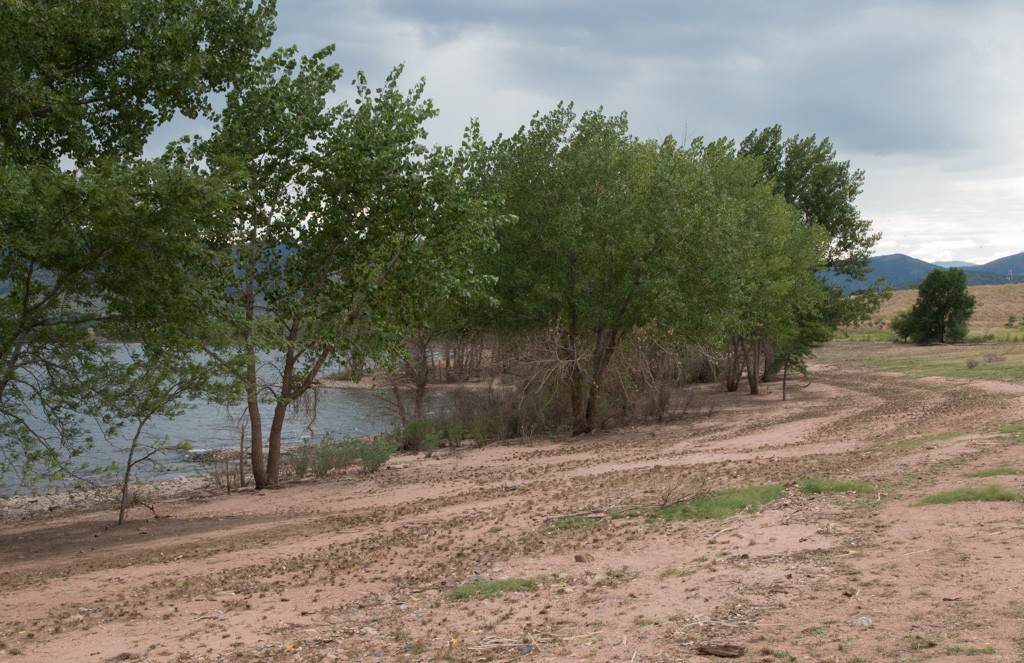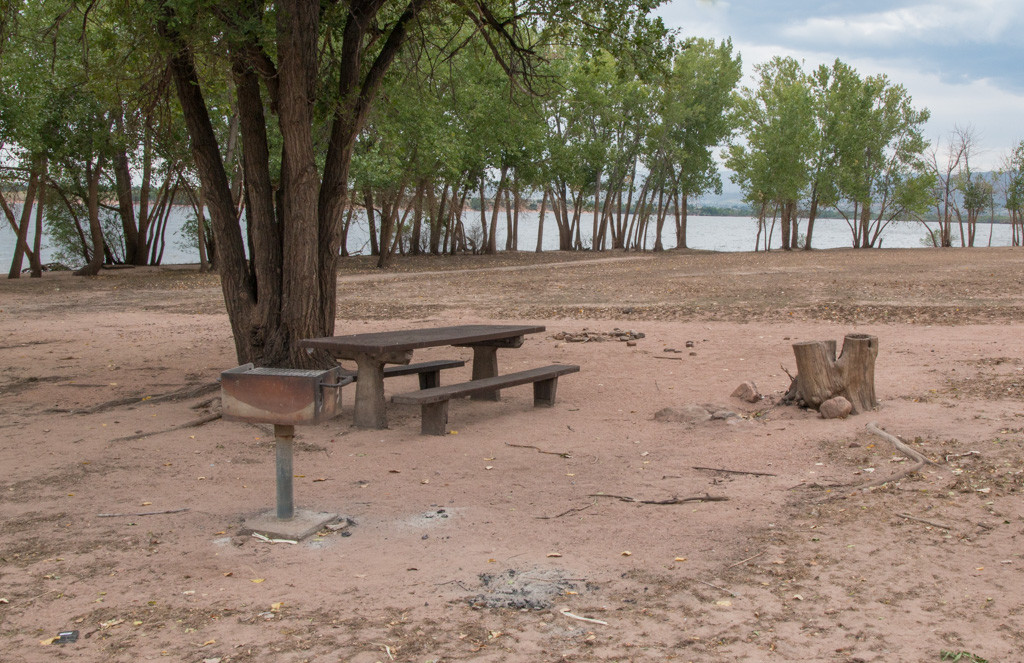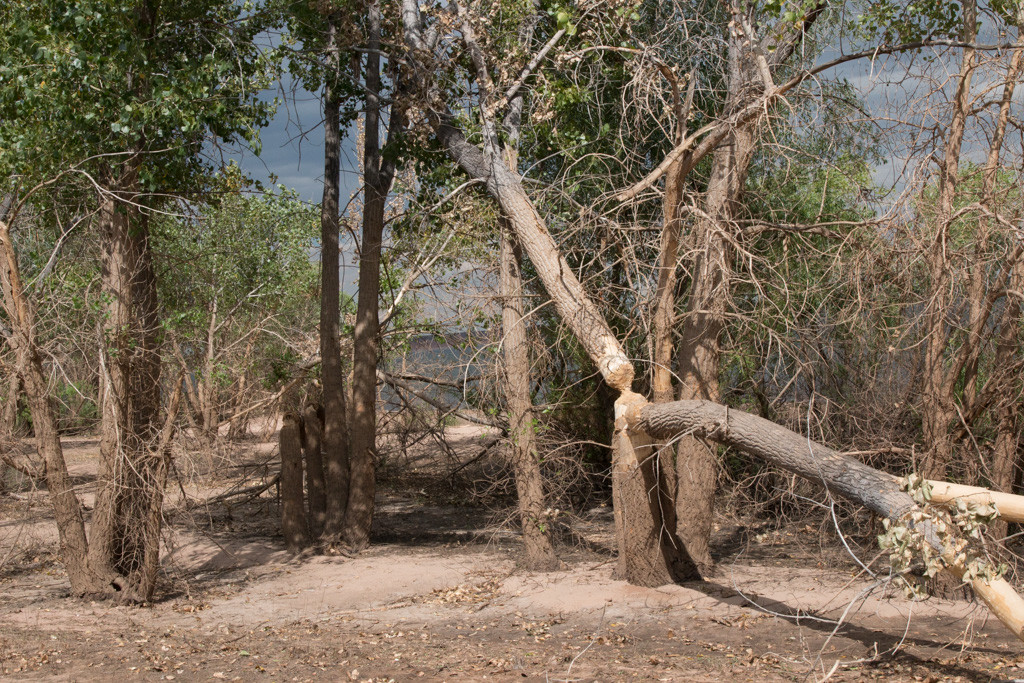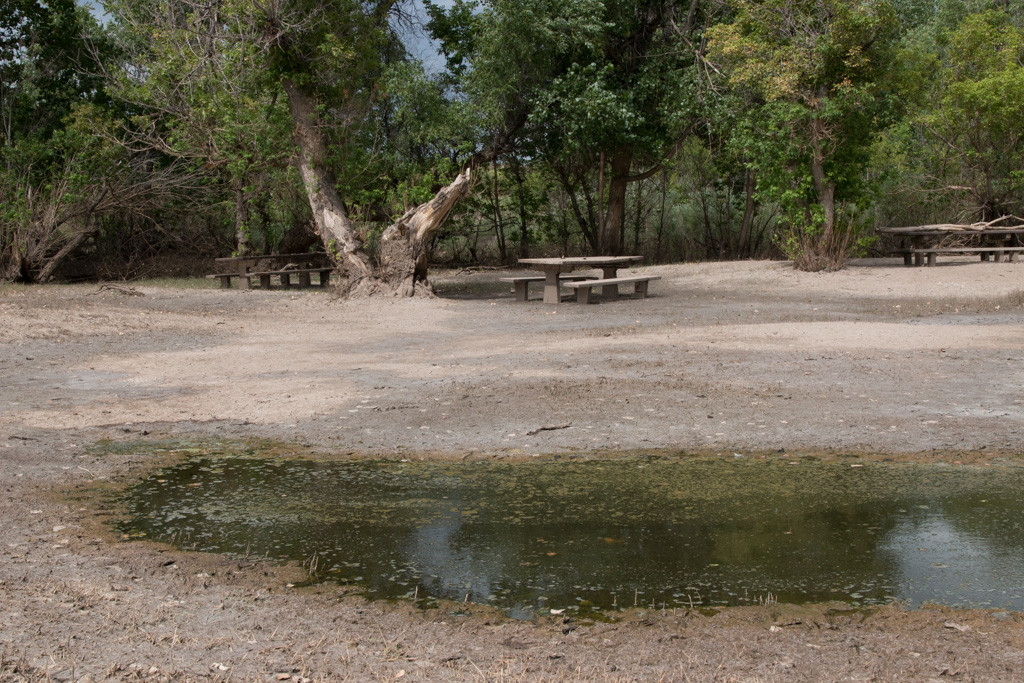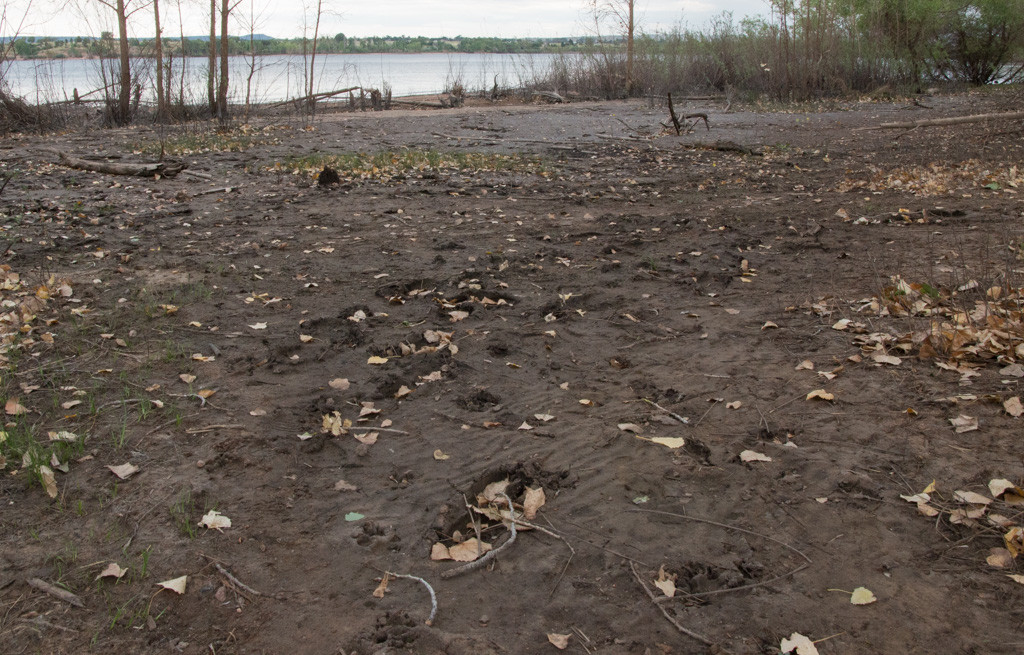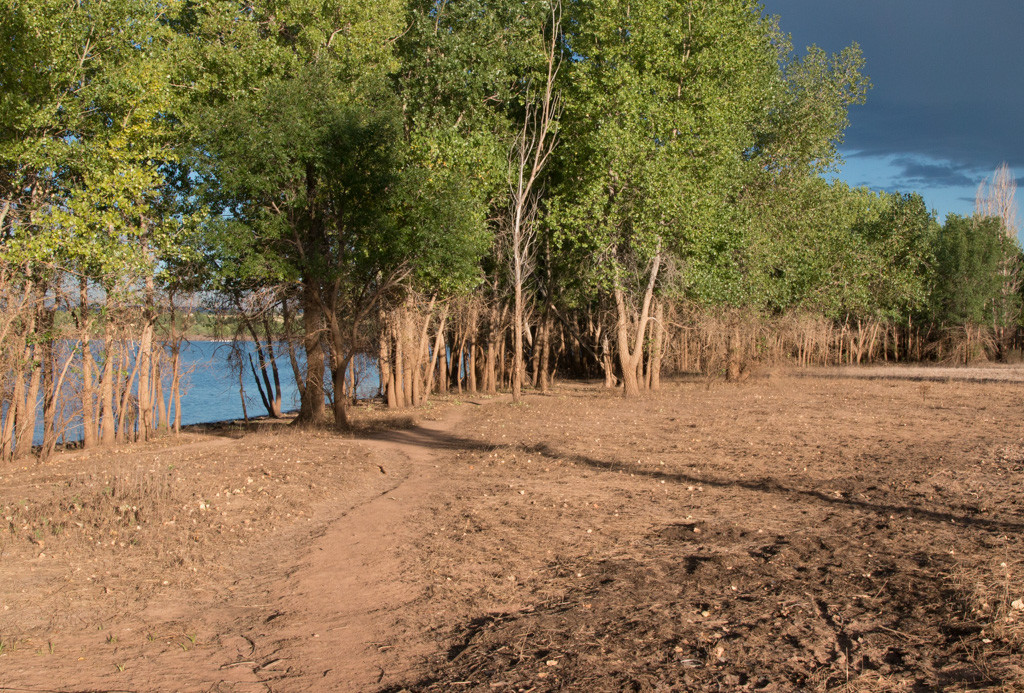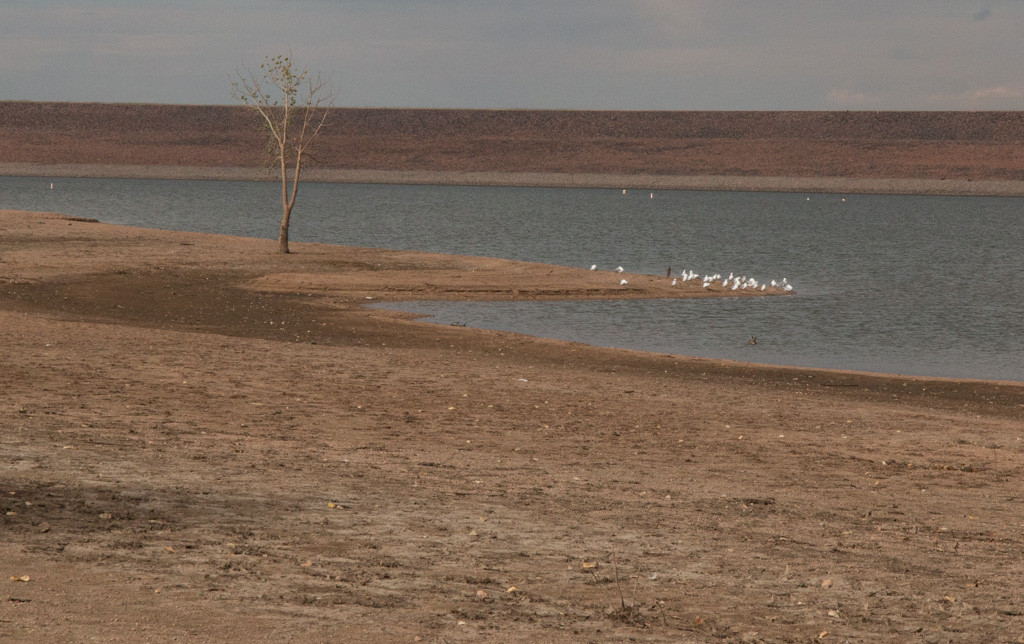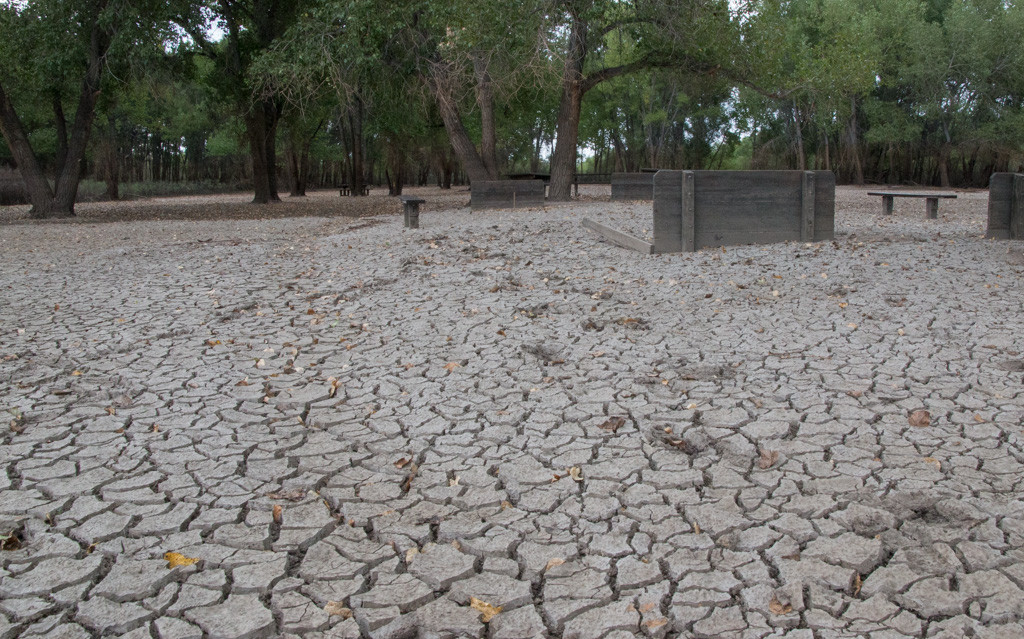In 2015 an unusually wet spring coupled with rapid snowmelt forced Chatfield Reservoir to be used for its primary purpose — flood control. By August 3 when the following photos were taken, high water levels had returned to normal. Changes resulting from the flooding offer some indication of the effects reallocation would have in the 7 years out of 10 when no additional water would be available to store in the reservoir.
One obvious effect of the flooding is that it killed lower branches on trees that were partially submerged. If high water levels were maintained in the reservoir for the longer times anticipated by the reallocation plan, these trees would likely die completely. Approximately 296 acres of trees deemed most likely to die would be cut down and removed as part of the reallocation project.
